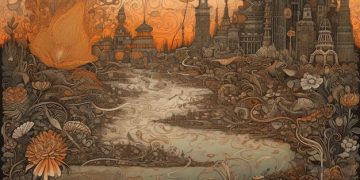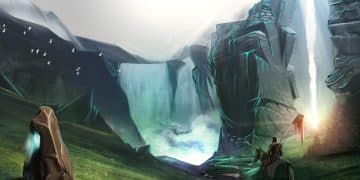The Evolution of Romance Novels: Changing Tropes and Modern Love
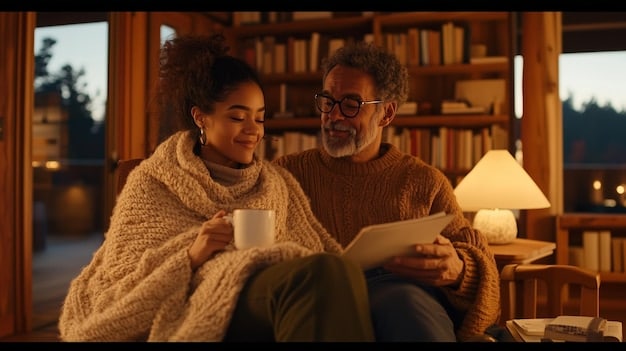
Romance’s evolution in literature reflects shifting societal norms, with contemporary novels increasingly challenging traditional tropes and embracing diverse characters and storylines to resonate with modern readers.
The landscape of romance novels has transformed significantly over the years. The **romance’s evolution: analyzing the changing tropes in contemporary romance novels** highlights how authors are pushing boundaries to create more inclusive and relatable stories. Join us as we delve into the shifting trends shaping modern romance.
The Historical Foundations of Romance
Romance novels didn’t always look and read as they do today. Understanding their roots provides essential context for appreciating the genre’s subsequent transformations. From classic literature to the rise of dedicated romance imprints, several pivotal moments shaped its identity.
Early Literary Influences
The roots of romance can be traced back to classic works of literature. These stories, often centered around love and adventure, laid the groundwork for the romance genre as we know it today.
- Jane Austen’s Impact: Jane Austen’s novels, like “Pride and Prejudice,” established many of the tropes still prevalent today, including witty banter, societal expectations, and strong female leads.
- Victorian Era Romances: The Victorian era saw the rise of sentimental novels that heavily emphasized emotional connections and moral lessons, further shaping the genre.
- Gothic Romance: With works like “Jane Eyre” by Charlotte Brontë, these stories mixed romance with suspense, adding layers of mystery and intrigue to the narrative.
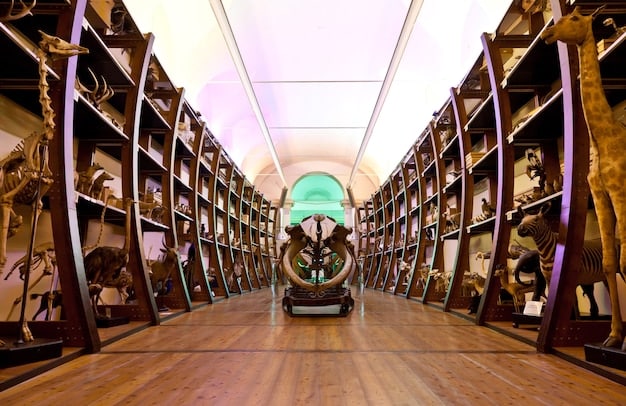
The Birth of the Modern Romance Genre
The mid-20th century marked a turning point, as dedicated romance imprints began to emerge. These publishers catered to a growing audience hungry for stories focused primarily on the romantic relationship.
- Mills & Boon: This British publisher, founded in 1908, became a significant force in popularizing formulaic romance novels. Their emphasis on guaranteed happily-ever-afters (HEAs) greatly influenced the genre.
- Harlequin Enterprises: The Canadian publisher became North America’s largest publisher of romance fiction, playing a vital role in shaping and distributing the genre on a much wider scale.
- Genre Conventions: Publishers established genre conventions such as specific plot structures, character archetypes, and themes that were adopted by authors, ensuring consistency and predictability for readers.
In conclusion, the historical foundations of romance are built upon classic literature and the emergence of dedicated imprints like Mills & Boon and Harlequin. These foundational elements deeply influenced contemporary romance and its ever-changing tropes.
Evolving Heroine Archetypes
One of the most significant shifts in contemporary romance is the representation of heroines. Traditional archetypes are giving way to more diverse, complex, and empowered female characters that mirror modern values and experiences.
From Damsel to Independent Woman
The traditional damsel-in-distress archetype, once a staple of romance novels, is becoming less common. Contemporary heroines are now portrayed as independent, capable women who actively pursue their goals and make their own decisions.
- Career-Driven Women: Many contemporary romances feature heroines who prioritize their careers and personal ambitions, balancing their professional lives with their romantic desires.
- Complex Backstories: Modern heroines often have intricate pasts that shape their present selves, adding depth and realism to their character.
- Challenging Societal Norms: These characters often defy traditional gender roles and expectations, empowering readers and promoting progressive values.
Diversity and Representation
Contemporary romance is making strides in representing a broader range of experiences and backgrounds. Heroines from diverse ethnic, racial, and socioeconomic backgrounds are taking center stage, offering representation to previously marginalized readers.
- Racial and Ethnic Diversity: More novels are featuring heroines of color, celebrating their unique cultural identities and perspectives.
- LGBTQ+ Representation: Romance novels are increasingly including LGBTQ+ heroines, exploring their experiences with love and identity.
- Disability Representation: Contemporary romance is also embracing heroines with disabilities, offering nuanced portrayals and challenging ableist stereotypes.
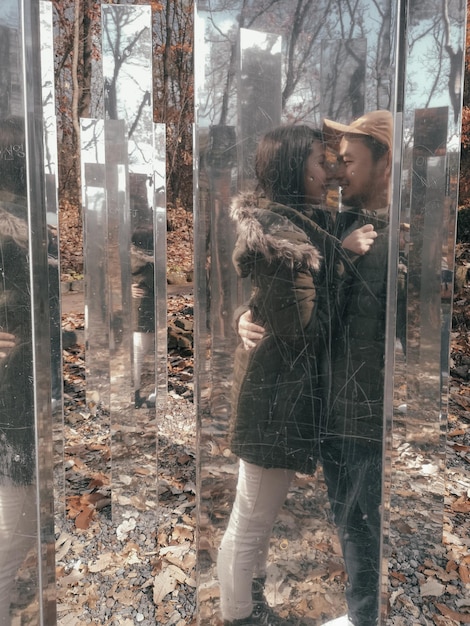
In summary, the evolving heroine archetypes in contemporary romance reflect a move towards more diverse, independent, and empowered female characters. This shift captures the complexity of modern values and offers representation to a wider range of readers.
Rethinking the Male Lead
Just as heroines are evolving, so are the male leads in modern romance. Traditional tropes of the alpha male are being challenged and redefined, giving way to more sensitive, empathetic, and multifaceted characters.
Beyond the Alpha Male
The traditional alpha male, often characterized by dominance and aggression, is being reimagined in contemporary romance. Authors are exploring more nuanced portrayals of masculinity that emphasize emotional intelligence and vulnerability.
- Emotional Intelligence: Modern male leads are often portrayed with a high degree of emotional intelligence, capable of understanding and responding to their own feelings and those of others.
- Vulnerability: Contemporary heroes are not afraid to show vulnerability, challenging the notion that men must always be strong and stoic.
- Respectful Relationships: These male leads prioritize respect and equality in their relationships, valuing their partner’s autonomy and agency.
Challenging Toxic Masculinity
Modern romance novels are increasingly tackling issues of toxic masculinity, presenting male characters who actively work to overcome harmful stereotypes and behaviors. These characters serve as positive role models by promoting healthier expressions of masculinity.
In conclusion, rethinking the male lead in contemporary romance involves moving beyond the traditional alpha male and embracing characters with sensitivity, empathy, and respect, reflecting evolving societal expectations of masculinity.
Plot Twists and Narrative Structures
Beyond character archetypes, the plots and narrative structures of romance novels are also evolving to reflect modern sensibilities. Linear plotlines are being replaced with more complex narratives that explore social issues and personal growth.
Addressing Social Issues
Contemporary romance is increasingly engaging with important social issues, using the romantic narrative as a vehicle to explore themes such as inequality, trauma, and identity. These novels aim to raise awareness and promote empathy by integrating social commentary into their storylines.
- Mental Health: Many romance novels now address mental health issues, portraying characters grappling with anxiety, depression, and other conditions.
- Social Justice: Some romances tackle issues of social justice, such as racial discrimination, economic inequality, and gender bias, providing a platform for important conversations.
- Trauma and Healing: Contemporary plots often delve into characters’ past traumas, exploring how they navigate healing and build healthy relationships.
Non-Linear Storytelling
Contemporary authors are experimenting with non-linear storytelling techniques, creating more dynamic and engaging narratives. These techniques can include flashbacks, multiple points of view, and unconventional plot structures.
In summary, contemporary romance is pushing the boundaries of traditional plot structures by addressing social issues and experimenting with non-linear storytelling. This evolution reflects a broader trend in literature towards more complex and nuanced narratives.
The Impact of Technology and Social Media
Technology and social media have profoundly influenced the romance genre, changing the way authors connect with readers and the types of stories that are being told. These platforms provide new avenues for authors to promote their work and engage with a global audience.
Social Media Influence
Social media platforms like Twitter, Instagram, and TikTok have become essential tools for romance authors to connect with readers and build their brands. These platforms provide a direct line of communication, allowing authors to share updates, solicit feedback, and foster a sense of community.
- Author-Reader Interaction: Social media facilitates direct interaction between authors and readers, fostering a more personal and engaged community.
- Book Promotion: Authors use social media to promote their books, sharing excerpts, cover reveals, and behind-the-scenes content.
- Trendsetting: Social media trends influence the types of stories that are being told, as authors respond to reader interests and demands.
E-books and Digital Publishing
The rise of e-books and digital publishing has democratized the romance genre, providing opportunities for independent authors to reach a wider audience. These platforms allow authors to bypass traditional publishing gatekeepers and retain more control over their work.
In summary, technology and social media profoundly impact the romance genre, transforming how authors connect with readers, promote their work, and explore new narrative possibilities.
Genre Blending and Subgenres
Contemporary romance often transcends traditional genre boundaries, blending elements from various genres and creating new subgenres that cater to diverse reader tastes. This genre blending enriches the reading experience and appeals to a broader audience.
Hybrid Romance
The blending of genres has become increasingly common in contemporary romance. Authors are combining romance with elements of science fiction, fantasy, mystery, and thriller, creating hybrid narratives. This allows for richer storytelling and broader appeal.
In conclusion, genre blending and the emergence of subgenres in contemporary romance reflect a desire to cater to diverse reader tastes and push the boundaries of traditional storytelling.
Future Trends in Romance Novels
As societal values continue to evolve, romance novels will likely continue to adapt and innovate, reflecting the changing landscape of love and relationships. These future trends point to a more inclusive, diverse, and socially conscious genre.
Increased Diversity and Inclusion
The demand for diverse and inclusive stories will likely continue to grow, with more romance novels featuring characters from marginalized communities and exploring different cultural perspectives. This will ensure that the genre remains relevant and representative of its readership.
- Intersectional Representation: Future trends may include a greater focus on intersectional representation, exploring the complexities of identity and experience.
- Global Perspectives: Romance novels may increasingly feature stories set in different countries and cultures, offering readers a broader worldview.
In summary, the future of romance will likely be characterized by increased diversity, inclusivity, and engagement with social issues, reflecting the evolving landscape of love and relationships in the 21st century.
| Key Point | Brief Description |
|---|---|
| 📚 Historical Roots | Tracing back to classic literature and dedicated publishers. |
| ♀️ Evolving Heroines | Independent, diverse women taking central roles. |
| ♂️ Rethinking Male Leads | Sensitive, empathetic men who challenge toxic norms. |
| 📱 Tech & Social Media | Transformed author-reader interaction and book promotion. |
Frequently Asked Questions
▼
Classic tropes include love triangles, enemies-to-lovers, damsel in distress, and the alpha male. These tropes have been staples of the romance genre for many years, but are now being reimagined or subverted in contemporary works.
▼
Diversity has brought more representation to marginalized communities. Characters are now from diverse ethnic, racial, and socioeconomic backgrounds, as well as the LGBTQ+ community and characters with disabilities, who take center stage.
▼
Social media has transformed how authors connect with readers, and books are promoted. Platforms like Twitter, Instagram, and TikTok provide direct communication lines, allowing authors to share updates, solicit feedback, and foster a sense of community.
▼
Modern romance novels address toxic masculinity, presenting male characters striving to overcome harmful stereotypes and behaviors. They’re displaying vulnerability and emotional intelligence, promoting healthier expressions of masculinity.
▼
Future trends include greater intersectional representation, global perspectives, and engagement in social issues. The demand for the diversity and inclusion of marginalized communities will continue to grow, and should also reflect readership.
Conclusion
The evolution of romance novels reflects broader societal shifts and changing reader expectations. From reimagined character archetypes to diverse storylines and innovative narrative structures, contemporary romance continues to evolve, ensuring the genre’s ongoing relevance and appeal.

